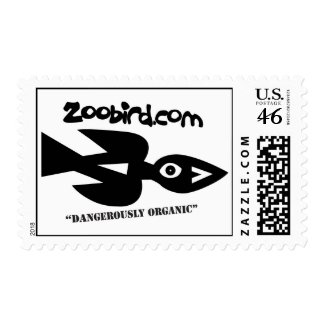Dangerously organic!
I think future historians will tell Florida’s story in terms of springs. There’s no overstating the role springs have played in the lives of Floridians, dating back to the very first Floridians who arrived nearly 14,000 years ago on the heels of the great Ice Age herds and extending through every culture and time period to the present.
For those first Paleo-Indians, springs were oases in a much cooler, drier Florida than we know today. For later cultures, they were invaluable sources of fresh water. Native people also considered springs to have medicinal and sometimes magical qualities. Ponce de Leon knew of a legendary Fountain of Youth before he ever set foot on Florida (though the extent to which he was motivated by a desire to find the "fountain is still debated). Three centuries later, natives living near White Sulphur Springs—the mineral-laden spring we know today as White Springs—told newly arriving settlers that the spring was sacred and that no hostilities could ever take place in their vicinity. They were neutral territory where even enemies could come and share the life-giving waters. The original Floridians--those people who lived here for 14,000 years (that's nearly 30 times as long as our own culture)--understood that there are some things far greater, and far more important, than the triflings of man.
The Indians reverence for the springs was duly noted by those first settlers of European ancestry. Like the Indians, many felt the springs had healing properties. Unlike the Indians, however, they pondered ways to make a buck on this water. Spas were built near the springs for invalids and tourists who came from across the country to bathe in the healing water. And for those who couldn’t make the voyage, Florida water was shipped to them. A century before Coca Cola or Nestle ever captured a drop of Florida water to ship off to distant watersheds, bottles of Suwannee Springs water could be found on store shelves in New York and other large cities throughout the country. But not grocery stores, pharmacies, where they sat perched alongside bottles of snake oil and other remedies.
Interest in Florida’s springs waned in the twentieth century. Except for a few springs-based tourist attractions—Florida’s original theme parks—and an unwavering popularity among locals as swimming holes, Florida’s springs were unheralded natural wonders. It’s only been in recent decades that a re-born bottled water industry brought the outside world to the springs again. They have also become more widely appreciated for their role as windows into the Floridan Aquifer—the primary source of fresh water, for consumption as well as other uses such as irrigation. And with this increased attention, has come an awareness that this vital natural water system is in imminent danger. Florida’s springs have taken on the role of canaries in the coal mine.
It is becoming clear that concern for the health of Florida’s springs is moving toward the forefront. Until now, springs protection has been the cause célèbre of a small subculture of nature lovers—that’s us—who have been slowly gathering the information about how springs work and have started speaking out about it. Our world-class cave divers and cutting edge researchers like Dr Odum, Bob Knight and others, have provided the hard science of how these systems work. And with it, has come indisputable evidence that our aquifer and springs are in desperate straits. Local educators and activists and nature guides have heard the message and are helping spread the alarm.
But, regardless of how well we present this information through venues like the Blue Path exhibit now displayed at the Florida Museum of Natural History in Gainesville, it’s still little more than a grass-roots movement. In reality, this groundswell of attention on Florida’s springs is barely a decade old. Nearly everyone now involved in this effort can trace the roots of their journey—the life’s journey that brought them to this cause--back to pursuits that did not involve springs protection. Cave divers followed their sense of adventure into the caves, biologists directed their interest in ecology to the study of springs, hydrologists, geologists and others pursued their interests without a clue it would lead them into battle. For me, it was a passion for studying nature and outdoor survival, and for teaching others about the wild places I have come to love. But all of our paths led to the same place.
All of us, in our own special ways and seeing springs from our own unique perspectives, have slowly come to realize we are facing a huge problem. Luckily for Florida, there are many people who see these problems as more than fodder for academia or as a source for green-tinted political rhetoric. For them, they are a blaring call to action. A handful of working groups have been organized in recent years, and are passionately brainstorming ideas and coordinating efforts to spread the word. The Howard T. Odum Florida Springs Institute promises to be a powerful addition to this network of organizations.
We already know the role springs have played in the Florida story up to this point. But the story that will be told by future historians is incomplete. We are, quite literally, writing the next chapters of the Florida story. The actions we take to protect the springs and the threats we ignore will not only influence the story future historians will tell about Florida, but how that story ends--and when.
Comment
-
Comment by Michael Levin on January 26, 2011 at 1:03pm
-
Thanks, Lars. As always, your stories educate and persuade us to think from a personal standpoint about our own actions. I find myself remembering advice like "Don't use your toilet like a trash can!" and "Dispose of thoughtfully". One quote that rings in my ears is Joni Mitchell's "Pave paradise and put up a parking lot". I also heard someone say "...Like chopping down a tree and naming a street after it." I love the springs. Excellent article. Best regards, Michael Levin
© 2024 Created by Michael Levin.
Powered by
![]()






You need to be a member of Zoobird to add comments!
Join Zoobird